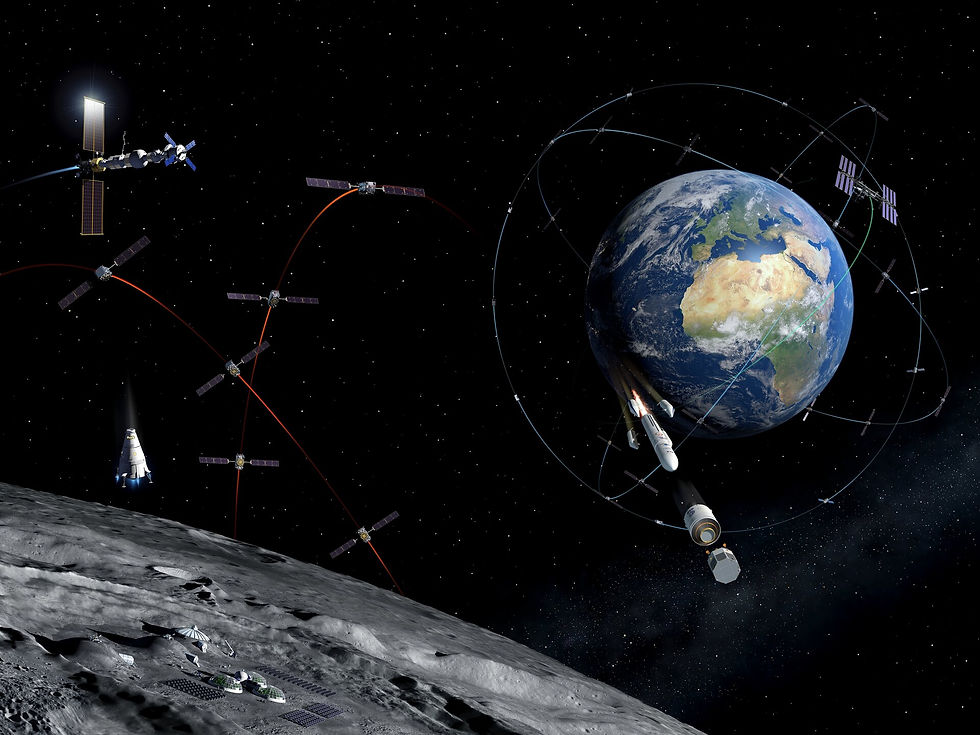Leaps in Plasma Science
- Webmaster
- Sep 13, 2020
- 4 min read
Updated: Apr 16, 2021
From the latest missions from ESA and NASA to the modern technology of nuclear fusion, plasma has been and will be an important feature in the news.
Plasma is a phase of matter like solid, liquid or gas [1]. It is where a gas is positively ionised (where there are more protons, or positively charged particles, than electrons, or negatively charged particles) with free electrons (not bound to atoms) around the positive ions, resulting in a charge of around ±0 (neutral). This is found at low pressures (in the upper atmosphere) and at high temperatures (in stars) [2].
'Unlimited Energy'
[3]
Nuclear fusion is a new technology, created in many ways, namely in thermonuclear fusion. One of the ways to harness power from nuclear fusion is through using a TOKAMAK (from the Russian acronym 'ТОКАМАК' standing for Тороидальная Камера с Магнитными Катушками' or 'Toroidal Chamber with Magnetic Coils') [3].
There are ~50 of these in operation [4], which work by putting hydrogen gas under extreme heat and pressure, before an electric current is put through the gas and it turns into plasma. The plasma is then heated to 150 to 300 million ºC, where the electromagnetic force (which helps keep the various sub-atomic particles stay in their place) is overcome and the sub-atomic particles collide and fuse (hence 'nuclear fusion'), releasing a lot of energy in the process [3].

DIII-D Tokamak Fusion Chamber. Credit: Rswilcox, CC BY-SA 4.0
'More Plasma = More Acceleration'
[5]
Plasma is also used in CERN, (the European Organisation for Nuclear Research). In 2016, CERN began the project called AWAKE (Advanced WAKEfield Experiment), which aims to accelerate electrons to bring them quickly to high speeds over short distances (10 metres) with little energy being used.
It does this by firing a laser pulse at rubidium gas, causing it to ionise, turning it into plasma. This creates a wakefield (an area of strong potential gradient) making it possible to accelerate the electrons at high speeds.
It is hoped that the distance that this is possible to do will be increased to be longer than the 10 metres it is currently effective at [5].

CERN's AWAKE Project. Credit: Maximilien Brice, CC BY 4.0
'First-ever Mission to "touch" the Sun'
[6]
The Parker Solar Probe, launched by NASA in 2018, will get to 4 million miles (~6.4 million kilometres) from the surface of the Sun. This mission will observe the solar wind (a form of plasma), to find out what accelerates it from subsonic to supersonic. It will also help in forecasting space weather (changed by solar wind, among other things), which can alter orbits of satellites and even shorten a satellite's lifespan. This means that, in the future, we can take steps to protect against satellites being damaged [6].

Artist Impression of the Parker Solar Probe. Credit: NASA/Johns Hopkins APL/Steve Gribben
'Most complex scientific laboratory ever to have been sent to the Sun'
[7]
ESA's Solar Orbiter is going to as close as 42 million kilometres (~26 million miles) from the Sun's surface. The probe will answer many so far unanswered questions about the Sun, including "What drives generation of the Solar Wind?".
The Sun's behaviour has puzzled scientists for many years, but soon, with help from Solar Orbiter, we will be able to make more accurate predictions of solar wind to again help protect satellites from damage, whilst expanding our knowledge of the Sun, and creating new questions to answer [7].

Part of Solar Orbiter being built in Stevenage, UK. Credit: O. Usher (UCL MAPS), CC BY 2.0
'Compact, Electrodeless and Low Voltage Design'
[8]
Recently, ESA has announced that they, along with SEND and the Universidad Carlos III's Plasma & Space Propulsion Team (EP2-UC3M) in Spain, have developed a new design for a propulsion engine, using electric propulsion to bring extra energy into the thrust reaction, making it more energy efficient to use thrusters on small satellites with this type of thruster.
This means satellites need to use less weight and space for fuel, and so can use more for new scientific instruments, whilst having fuel that will last much longer, so satellites can be operational for longer.
It has resulted in the new Helicon Plasma Thruster for use in the EU funded HIPATIA project (find out more here). [8] [9]

Thruster During Test Firing (NASA's version). Credit: NASA
Plasma has been used over many years to light up neon shop signs, but it is now being used in cutting edge science to further our understanding of the world and to meet our growing demands as we look for alternative energy to traditional, but harmful, fossil fuels.
by George Abraham, ADAS member
Click here for the next news article
References
Goldston, R.J.; Rutherford, P.H. (1995). Introduction to Plasma Physics. Taylor & Francis. p. 1−2.ISBN978-0-7503-0183-1.
"How Lightning Works". HowStuffWorks. April 2000. Archived from the original on 7th April 2014.
"Tokamak". Iter. Archived from the original on 13th August 2020.
"All-the-World's Tokamaks". All-the-World's Tokamkas. Archived from the original on 4th June 2020.
"AWAKE: More plasma = more acceleration". CERN. Archived from the original on 13th September 2020.
"Parker Solar Probe". NASA. Archived from the original on 13th September 2020.
"Solar Orbiter". ESA. Archived from the original on 4th September 2020.
"Plasma Propulsion for Small Satellites". ESA. Archived from the original on 13th September 2020.
"HIPATIA". HIPATIA. Archived from the original on 13th September 2020.









Comments